Pineapple (Ananas comosus), a tropical fruit packed with nutrients and flavor, is surprisingly easy to grow with the right conditions. One of the most crucial factors that determine the health and productivity of a pineapple plant is its soil and sunlight requirements. If you want to enjoy sweet, homegrown pineapples, understanding and optimizing these two elements is essential. In this article, we’ll explore everything you need to know about providing the best soil and sunlight for pineapple plants, whether you’re growing them in the ground, containers, or indoors.
Understanding Pineapple Plant Basics
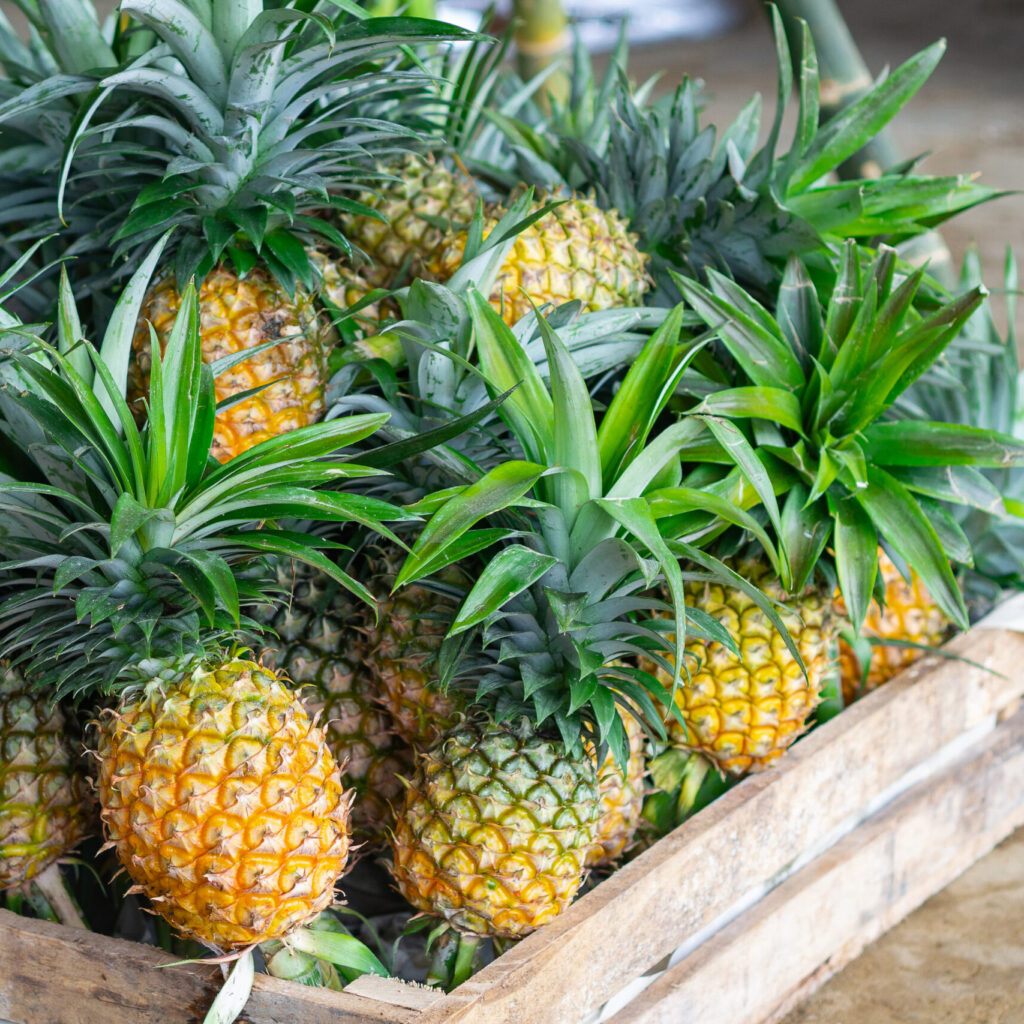
Before diving into soil and sunlight specifics, it’s helpful to understand how a pineapple plant grows:
- Growth Habit: Pineapples are herbaceous perennials. They grow from a central rosette of tough, spiny leaves and produce a single fruit per plant.
- Root System: They have shallow roots, meaning they rely heavily on topsoil quality.
- Sun-Loving Nature: Pineapples thrive in warm, sunny environments similar to their native habitat in South America.
Given these characteristics, the right soil and exposure to sunlight will ensure the plant thrives and produces high-quality fruit.
Ideal Soil for Pineapple Plants
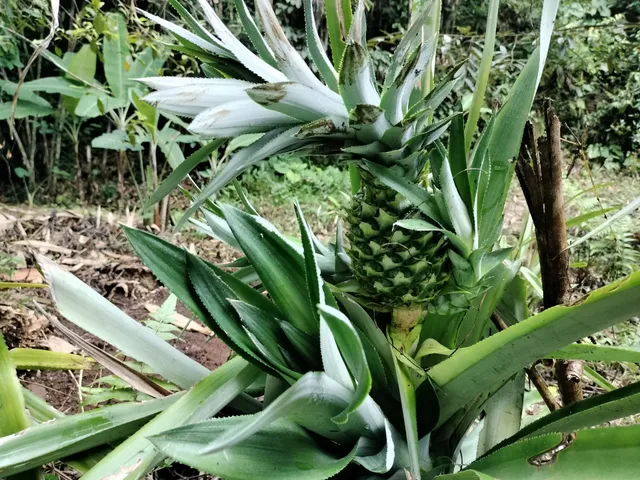
1. Well-Draining Soil is Key
Pineapple roots are sensitive to standing water. Poor drainage can lead to root rot, which is one of the most common causes of pineapple plant failure.
Best Soil Types:
- Sandy loam
- Loamy or gritty soil blends
- Cactus potting mix (if growing in containers)
You can improve heavy clay soil by:
- Mixing in coarse sand, perlite, or pumice
- Adding organic compost to improve structure
2. pH Range: Slightly Acidic to Neutral
Pineapples prefer slightly acidic to neutral soil with a pH between 4.5 and 6.5. Soil that is too alkaline can hinder nutrient uptake and cause chlorosis (yellowing of leaves).
To Adjust Soil pH:
- To lower pH: Add elemental sulfur or peat moss.
- To raise pH: Add lime (if your soil is too acidic).
Test your soil using a pH kit or meter before planting. If growing in containers, buy a pH-balanced potting mix labeled for tropical plants or citrus.
3. Nutrient-Rich and Aerated
Though pineapple plants aren’t heavy feeders, they do benefit from nutrient-rich soil, especially during fruiting.
Soil amendments to consider:
- Compost: Boosts microbial activity and organic matter.
- Aged manure: Adds nitrogen and micronutrients.
- Bone meal: Provides phosphorus for root and flower development.
Avoid soil that is too compact or too rich in clay, as it restricts root expansion and water movement.
Sunlight Requirements for Pineapple Plants
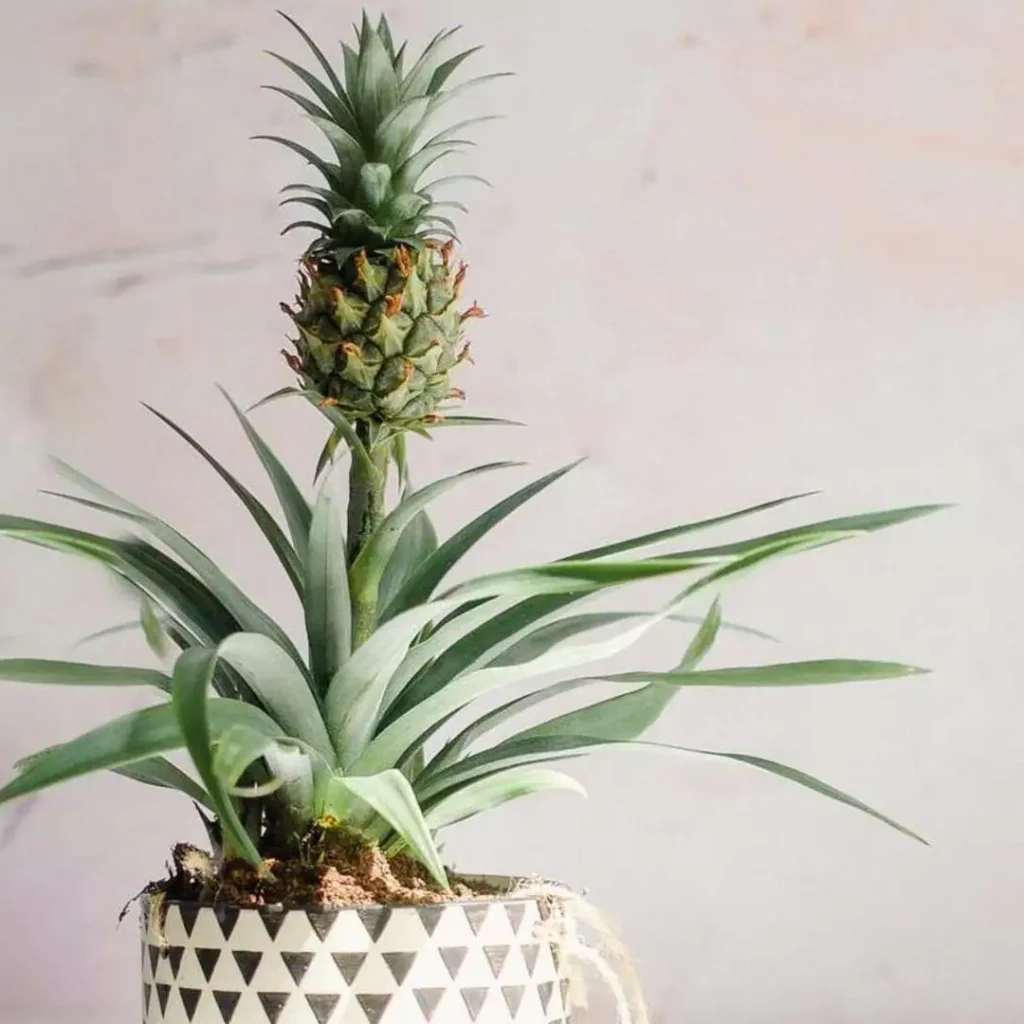
Pineapple plants love sunlight. In fact, sunlight plays a direct role in helping the plant photosynthesize and produce sweet fruits.
1. Full Sun Exposure (6–8 Hours Daily)
Pineapples grow best in full sun—at least 6 to 8 hours of direct sunlight each day. Insufficient light leads to:
- Slowed growth
- Pale or spindly leaves
- Delayed fruiting
- Smaller or less flavorful fruit
Best Locations:
- Outdoor garden bed with open sky exposure
- South- or west-facing spot on a patio
- Bright, sunny windowsill (if indoors)
- Greenhouse or sunroom with strong, consistent light
2. Sunlight and Temperature Relationship
Pineapples grow best in temperatures between 65°F and 95°F (18°C to 35°C). They’re not frost-tolerant, so in cooler climates, it’s important to give them adequate warmth.
Tips for Cold Climates:
- Use grow lights indoors (LED full-spectrum lights) during winter.
- Move pots indoors before temperatures fall below 50°F (10°C).
- Use cloches or frost blankets to protect outdoor plants.
How to Create the Perfect Growing Environment
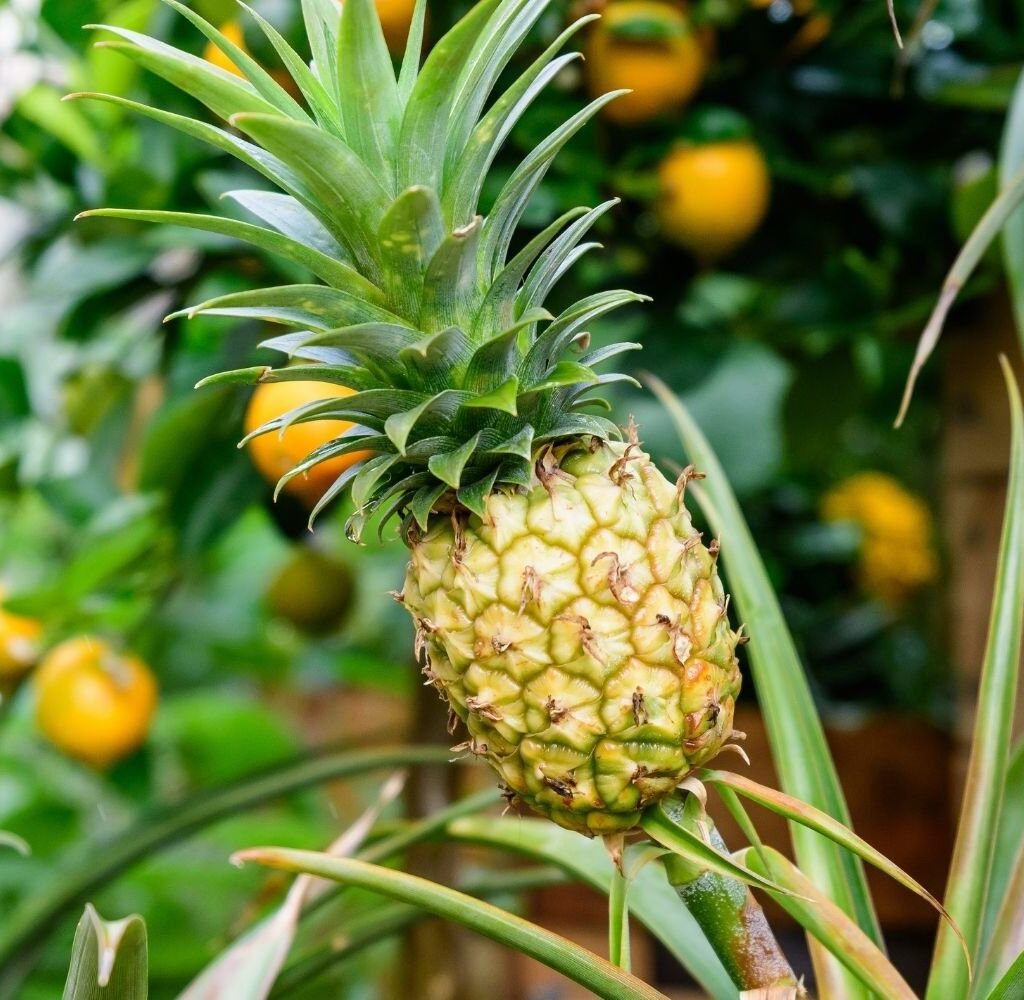
1. For Outdoor Planting
- Choose a site with full sunlight and good air circulation.
- Amend soil with sand and compost to ensure fast drainage.
- Build a raised bed if native soil drains poorly.
- Mulch lightly to retain moisture while keeping roots cool.
2. For Container Planting
- Select a container at least 12–14 inches wide with drainage holes.
- Fill with a cactus mix or blend of potting soil + coarse sand + compost.
- Place in a sunny location or under a grow light for 12–14 hours/day.
- Rotate the container every few days for even light exposure.
3. For Indoor Growing
- Place near a bright south-facing window.
- Supplement with a grow light if sunlight is limited.
- Keep room temperature between 65°F and 85°F.
- Avoid overwatering—let the soil dry out between waterings.
Common Mistakes to Avoid
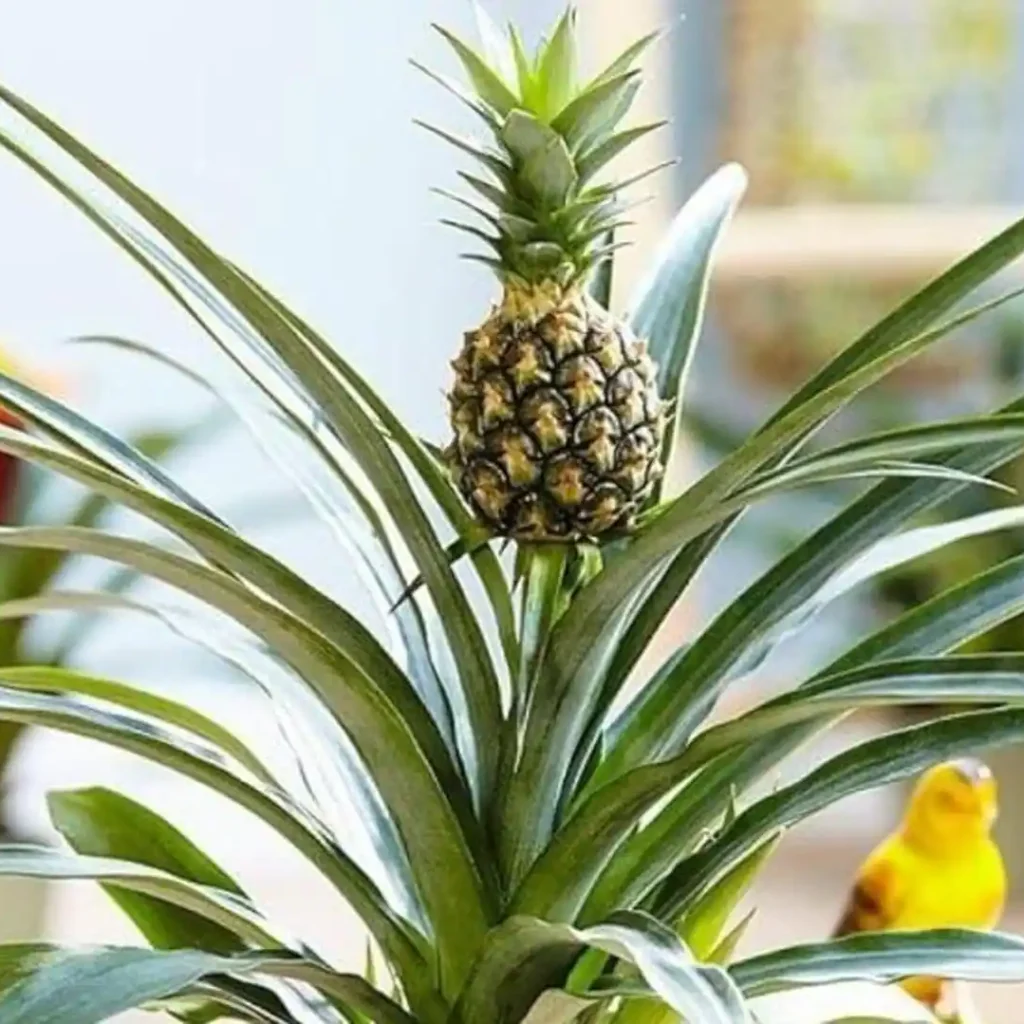
Mistake 1: Using Waterlogged or Clay Soil
This can cause root rot. Always ensure soil is well-draining and never let the pot sit in standing water.
Mistake 2: Insufficient Light
A pineapple in low light will become leggy and weak. Use artificial lights if you can’t provide natural full sun.
Mistake 3: Planting in Alkaline Soil
Always check pH levels and amend as needed. Alkaline soil reduces nutrient absorption.
Mistake 4: Crowding Pineapple Plants
Plants should be spaced at least 3 to 5 feet apart outdoors or grown singly in containers. Good spacing allows for better sunlight penetration and air flow.
Pro Tips for Thriving Pineapples
- Feed monthly: Use a balanced organic fertilizer or a foliar spray with micronutrients.
- Water wisely: Water only when the top inch of soil is dry. Water deeply but infrequently.
- Encourage flowering: Once mature (12–18 months), exposure to cooler nights can stimulate flowering.
- Be patient: From planting to harvest, pineapple plants may take 18–24 months to produce fruit.
Conclusion
Growing a pineapple at home is rewarding, especially when you can create the right environment. With the proper soil—loose, well-drained, and slightly acidic—and adequate sunlight of at least 6–8 hours a day, your pineapple plant will grow healthy and strong. Whether you’re planting in a garden or a pot on your balcony, focus on optimizing these two key factors to enjoy the sweet taste of homegrown pineapples. Follow the steps above, avoid the common mistakes, and you’ll be well on your way to harvesting juicy pineapples right from your own home.

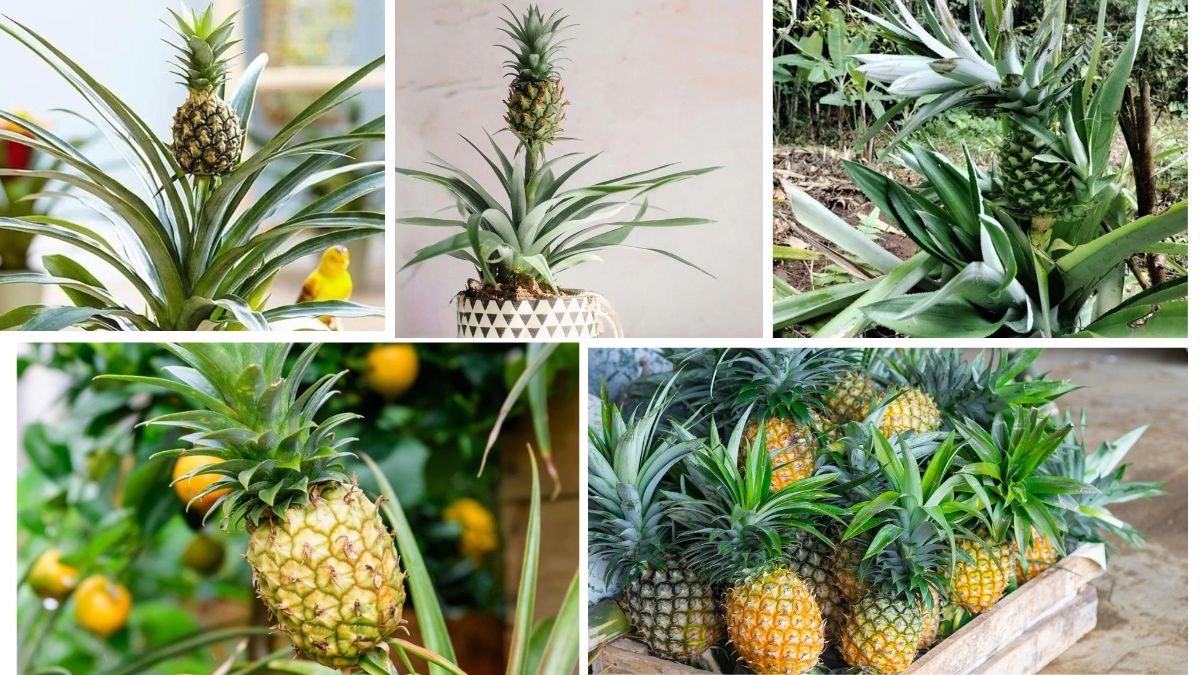





Leave A Comment